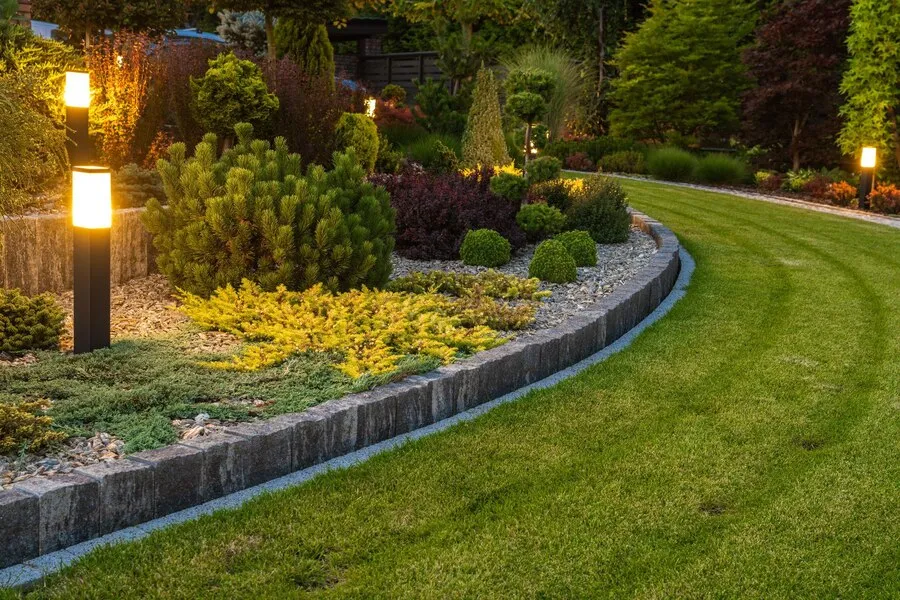Gardening enthusiasts often look for ways to enhance their outdoor spaces’ visual appeal and organisation. One effective method is garden edging, which clarifies boundary lines and adds a polished look to garden beds. By installing a distinct border, gardeners can create a clean separation between different areas, making maintenance easier and improving the overall aesthetic of the landscape.
Understanding the Basics of Landscape Borders
Landscape borders serve several practical and aesthetic purposes. They prevent grass invasion into flower beds, maintain mulch in garden areas, and reduce the need for frequent weeding. Depending on the landscaper’s style preferences and the yard’s specific needs, borders can be constructed from various materials, including stone, metal, and plastic. Additionally, these borders help to stabilise soil and control erosion, especially in sloped landscapes. Properly designed borders enhance the visual flow and can guide the eye to focal points or special features within the outdoor space. Bricks or cobblestones evoke classical charm, while steel or rubber offers sleek, modern lines.
Choosing the Right Materials
The selection of materials for landscape borders depends on the outdoor space’s design and the landscaper’s budget. Natural stone provides a durable and aesthetically pleasing option but can be more expensive and heavier. Metal edging offers a more modern look and is easier to install, while plastic variants provide an economical alternative with various colour choices to fit any landscape’s theme. For a more rustic or naturalistic look, consider using timber, which blends seamlessly into traditional landscapes and offers good durability if appropriately treated. Alternatively, recycled materials such as glass or rubber provide innovative, eco-friendly options that contribute to sustainability while offering unique visual appeal.
Installation Tips for Effective Edging
Landscape borders must be installed correctly to be effective and long-lasting. The process generally involves:
- Marking out the area where the border will be placed.
- Digging a trench.
- Ensuring that the edging material fits snugly against the sides of the trench. It’s
Ensuring the top of the edging material is level with or slightly below the grass line is essential to allow lawnmowers to pass over safely. After placing the edging in the trench, backfill it with soil to secure it. Stakes or pegs can anchor the material for added stability, particularly in soft soil conditions. Ensuring tight connections between edging sections will maintain a continuous barrier against grass and roots, simplifying future garden maintenance tasks.
Maintaining Your Garden Borders
Regular maintenance of landscape borders is necessary to preserve their appearance and functionality. This includes checking for any shifts in the material, especially after heavy rain or during spring thaw, and making adjustments as needed. Regularly weeding around the borders will prevent invasive plants from disturbing the established boundaries. Additionally, inspecting borders for signs of wear or damage ensures they continue to function effectively. Repairing or replacing deteriorated sections keeps the border secure and visually appealing. Applying a fresh layer of mulch along the borders can enhance moisture retention and suppress weed growth, further solidifying the effectiveness of the garden’s edging strategy.
Innovative Ideas for Border Designs
Creative gardeners might consider various design ideas to elevate their landscape borders. Curved lines, rather than straight edges, can add a soft and natural feel to the garden. Using contrasting materials or colours can highlight the garden’s features, making it stand out more prominently in the landscape. Incorporating unusual materials like ornamental grasses or pebbles adds depth and visual interest to the border design. Experimenting with different shapes and heights can improve the garden borders’ aesthetic appeal.
Including garden edging can significantly enhance the organisation and appearance of garden spaces. Gardeners may reap the rewards of a well-kept outdoor space by choosing suitable materials and installing them correctly. As with any gardening project, continuous creativity and maintenance will produce the best results, helping one’s garden stand out beautifully in its natural surroundings.

Jasper Bruxner is a passionate and versatile blogger with a keen eye for trends and a knack for crafting engaging content. As the founder of WendyWaldman.com, he has established himself as a trusted resource in a diverse range of niches, including food, tech, health, travel, business, lifestyle, and news. He tends to share the latest tech news, trends, and updates with the community built around Wendywaldman. His expertise and engaging writing style have attracted a loyal following, making him a respected voice in the online community.




